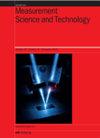用于往复式机械故障特征提取的改进型轻量级联合学习网络
IF 3.4
3区 工程技术
Q1 ENGINEERING, MULTIDISCIPLINARY
引用次数: 0
摘要
往复式机械的工作环境复杂,具有非线性和非稳态信号的特点。深度学习可以解决上述问题,但其自身也存在模型复杂、参数量大等问题。此外,企业间出于隐私考虑,无法共享数据,导致 "数据孤岛 "出现,深度学习模型训练不足。基于上述分析,本文提出了一种基于改进的联合轻量级网络的往复式机械特征提取方法。采用轻量级网络 SqueezeNet 模型来解决深度学习训练时间长等问题。通过建立联合学习框架,可以对各企业的往复机械数据进行集体诊断,从而解决因数据不足而导致模型训练受限的问题。此外,为了提高网络训练和诊断的准确性,还对 SqueezeNet 网络进行了修改,减少了模型参数的数量,同时增加了特征提取的数量和种类。实验结果表明,当 1×1 和 3×3 通道数为 1-7 时,故障诊断准确率最高,约为 97.96%,丰富了特征提取的种类。In-SqueezeNet 的参数数量是 SqueezeNet 网络模型的 56%,训练时间减少了近 15%。故障诊断准确率从 95.1% 提高到 97.3%,提取特征的多样性也得到了提高。与 ResNet 等其他网络模型相比,改进后的轻量级联合学习网络的故障诊断准确率为 96.6%,提高了 10.6%。同时,训练时间缩短至 1982 秒,减少了约 41.5%。提出的模型的有效性得到了进一步验证。本文章由计算机程序翻译,如有差异,请以英文原文为准。
Improved lightweight federated learning network for fault feature extraction of reciprocating machinery
he working environment of reciprocating machinery is complex, characterized by nonlinear and non-stationary signals. Deep learning can solve the above problems, but it has its own problems such as complex model and large amount of parameters. Additionally, privacy considerations among enterprises prevent data sharing, leading to the emergence of "data islands" and inadequate training of deep learning models. Based on the above analysis, this paper proposes a reciprocating mechanical feature extraction method based on an improved federated lightweight network. A lightweight network SqueezeNet model is used to solve the problems such as long training time of deep learning. By establishing a federated learning framework, the reciprocating mechanical data can be collectively diagnosed across various enterprises, thereby addressing the problem of limited model training caused by insufficient data. Furthermore, to enhance the accuracy of network training and diagnosis, modifications are made to the SqueezeNet network to reduce the number of model parameters while increasing the number and variety of feature extractions. Experimental results demonstrate that when the number of 1×1 and 3×3 channels is 1 to 7, the fault diagnosis accuracy is the highest, about 97.96%, which enriches the categories of feature extraction. The number of parameters in In-SqueezeNet is 56% of that in SqueezeNet network model, and the training time is reduced by nearly 15%. The fault diagnosis accuracy is increased from 95.1% to 97.3%, and the diversity of extracted features is increased. Compared with other network models such as ResNet, the improved lightweight federated learning network has a fault diagnosis accuracy of 96.6%, an improvement of 10.6%. At the same time, the training time was reduced to 1982s, a reduction of about 41.5%. The validity of the proposed model is further verified.
求助全文
通过发布文献求助,成功后即可免费获取论文全文。
去求助
来源期刊

Measurement Science and Technology
工程技术-工程:综合
CiteScore
4.30
自引率
16.70%
发文量
656
审稿时长
4.9 months
期刊介绍:
Measurement Science and Technology publishes articles on new measurement techniques and associated instrumentation. Papers that describe experiments must represent an advance in measurement science or measurement technique rather than the application of established experimental technique. Bearing in mind the multidisciplinary nature of the journal, authors must provide an introduction to their work that makes clear the novelty, significance, broader relevance of their work in a measurement context and relevance to the readership of Measurement Science and Technology. All submitted articles should contain consideration of the uncertainty, precision and/or accuracy of the measurements presented.
Subject coverage includes the theory, practice and application of measurement in physics, chemistry, engineering and the environmental and life sciences from inception to commercial exploitation. Publications in the journal should emphasize the novelty of reported methods, characterize them and demonstrate their performance using examples or applications.
 求助内容:
求助内容: 应助结果提醒方式:
应助结果提醒方式:


